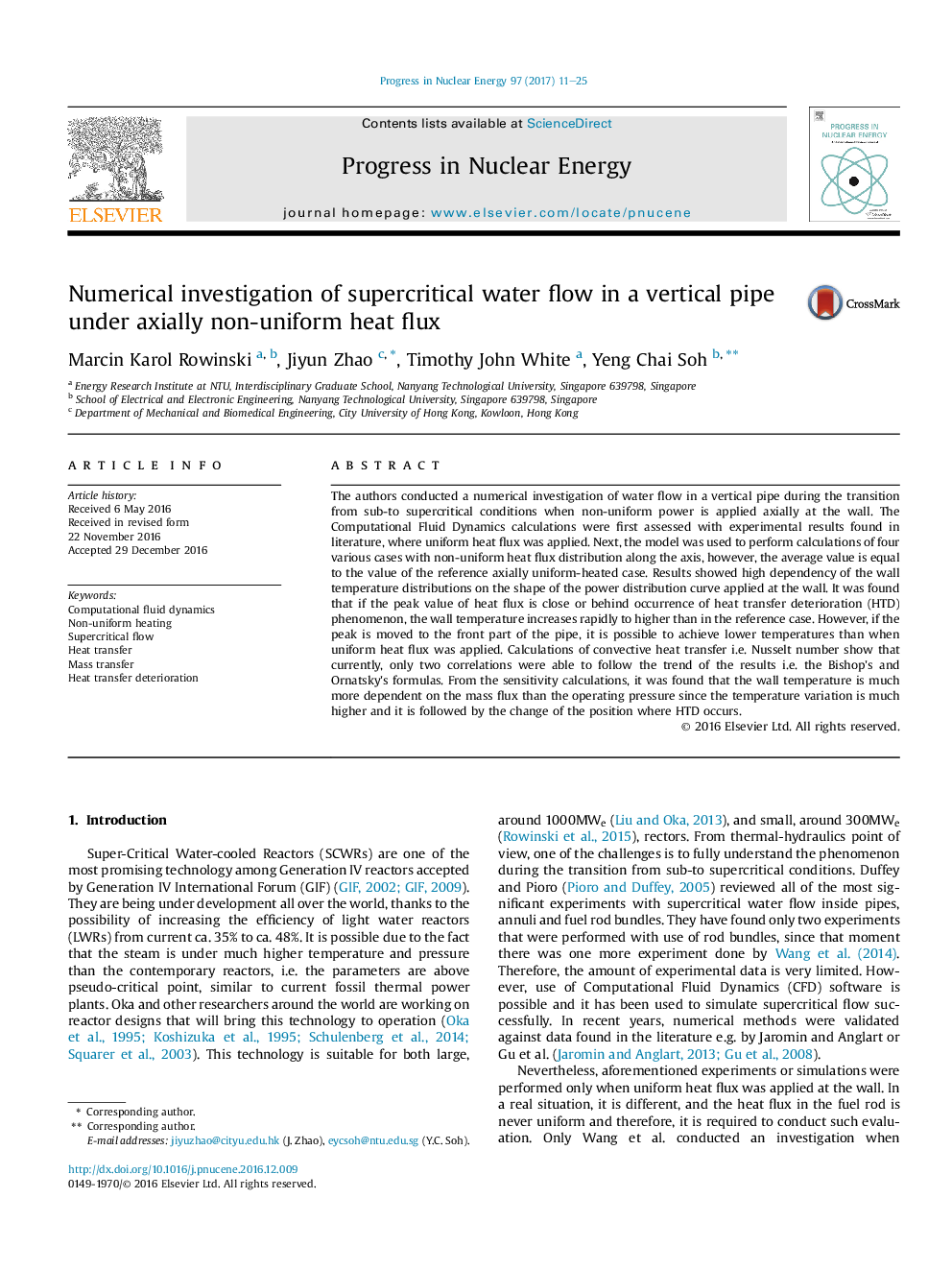| Article ID | Journal | Published Year | Pages | File Type |
|---|---|---|---|---|
| 5478078 | Progress in Nuclear Energy | 2017 | 15 Pages |
Abstract
The authors conducted a numerical investigation of water flow in a vertical pipe during the transition from sub-to supercritical conditions when non-uniform power is applied axially at the wall. The Computational Fluid Dynamics calculations were first assessed with experimental results found in literature, where uniform heat flux was applied. Next, the model was used to perform calculations of four various cases with non-uniform heat flux distribution along the axis, however, the average value is equal to the value of the reference axially uniform-heated case. Results showed high dependency of the wall temperature distributions on the shape of the power distribution curve applied at the wall. It was found that if the peak value of heat flux is close or behind occurrence of heat transfer deterioration (HTD) phenomenon, the wall temperature increases rapidly to higher than in the reference case. However, if the peak is moved to the front part of the pipe, it is possible to achieve lower temperatures than when uniform heat flux was applied. Calculations of convective heat transfer i.e. Nusselt number show that currently, only two correlations were able to follow the trend of the results i.e. the Bishop's and Ornatsky's formulas. From the sensitivity calculations, it was found that the wall temperature is much more dependent on the mass flux than the operating pressure since the temperature variation is much higher and it is followed by the change of the position where HTD occurs.
Keywords
Related Topics
Physical Sciences and Engineering
Energy
Energy Engineering and Power Technology
Authors
Marcin Karol Rowinski, Jiyun Zhao, Timothy John White, Yeng Chai Soh,
